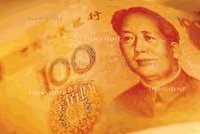Dollar leaps to 6-week highs in technical rally
NEW YORK, Sept 8 (Reuters) - The dollar rose to six-week highs on Friday as dealers aimed at technical targets and positioned for the risk that the Federal Reserve may have to raise interest rates again to keep inflation at bay.
The dollar was set for its biggest weekly gain in two months against a basket of six major currencies. Traders said the dollar's gains were mostly technically driven. The breach of key levels in the euro and sterling sparked a paring of bloated long positions, or bets that both currencies would rise. That added momentum to the dollar's gains. Solid U.S. economic data and warnings on inflation from Federal Reserve officials this week have also lent the dollar some support. Although analysts expect the Federal Reserve to keep interest rates on hold this month, dollar bulls have not given up hope for more rate rises in coming months. "It's mainly been technically driven, with the euro taking out some key support levels at $1.2750 and below $1.27 today," said Nick Bennenbroek, currency strategist at Brown Brothers Harriman in New York. "And on the margin we've had some data come in on the firm side this week, supporting the dollar." The euro was last down 0.5 percent on the day and down 1.3 percent on the week at $1.2665, after triggering large stop-loss orders below $1.2690 and touching a six-week low of $1.2651. Sterling slipped 0.6 percent to $1.8650, after earlier plumbing six-week lows of $1.8628. Against the Swiss franc, the dollar was up 0.4 percent at 1.2472 francs. The dollar index is up 1.25 percent on the week.The dollar stood at 116.90 yen, up 0.4 percent on the day. One of the biggest losers this week has been the New Zealand dollar, which has slumped almost 3 percent and extended losses on Friday after the country's finance minister voiced concern over the currency's recent rise. The kiwi dollar was down 1.3 percent at $0.6370
G7 AWAITED
Speakers from the Fed this week have continued to sound warnings on higher inflation even though economic growth is slowing, keeping the risk alive the Fed could be forced to tighten policy later this year and thereby support the dollar. "At the margins, some of the recent comments from Fed officials paint a different picture from what is priced into the market," said Sophia Drossos, currency strategist with Morgan Stanley. "Some of the doves on the FOMC are starting to sound circumspect about upside inflation risks," she said, referring to the policy-setting Federal Open Market Committee. The spotlight next week is expected to shift to a meeting of the Group of Seven industrial nations. Investors will be looking to see if finance ministers keep up pressure on countries enjoying big trade surpluses, notably China, to allow more currency appreciation. The dollar fell sharply after the last G7 meeting in April, when the group of rich nations urged more currency flexibility to help ease global imbalances -- a call that was interpreted as giving a green light to a weaker dollar. But it was a fleeting move. The dollar has since pared about half its losses against a group of major currencies. Against the yen, the dollar has rebounded completely.



















